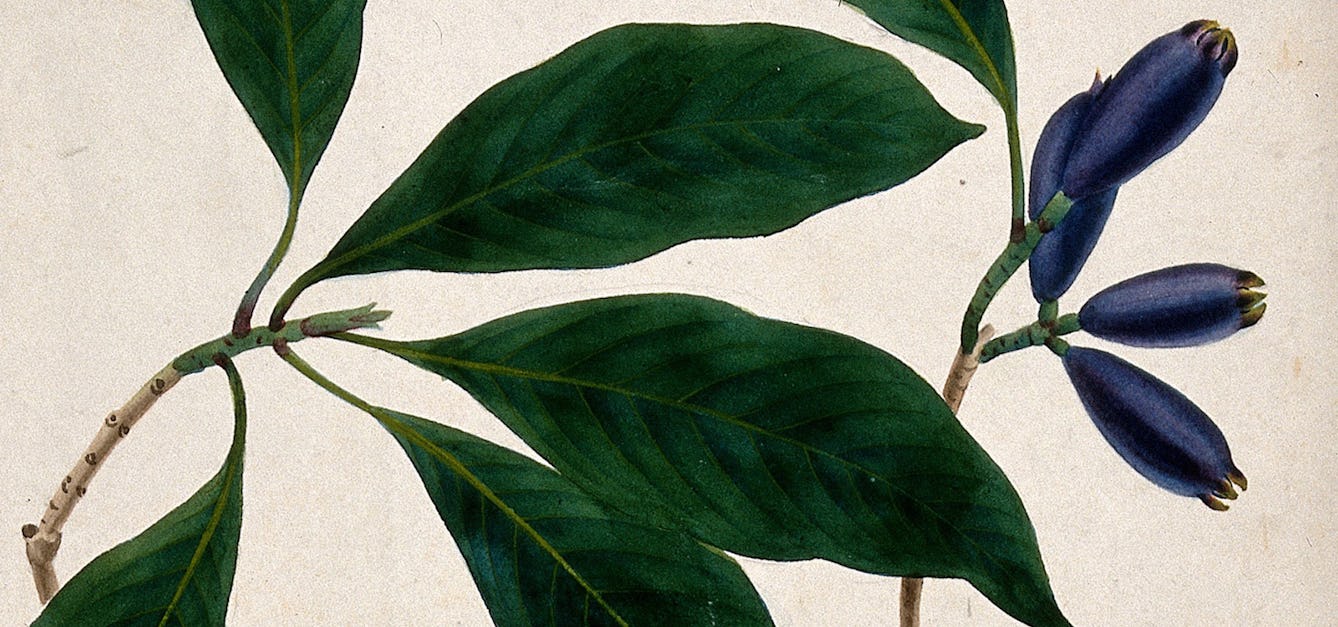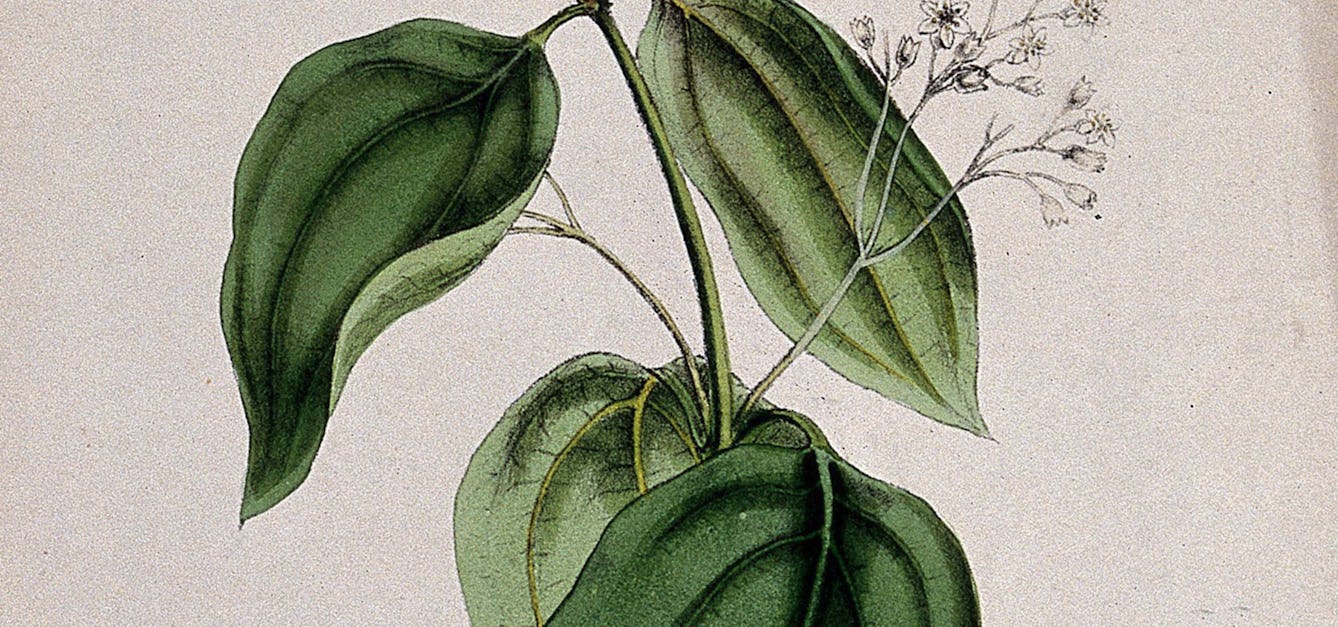Stories

- Article
Cloves to mull, mask and numb
Sweet, pungent, warm, woody: cloves smell and taste like Christmas. But there’s much more to this spice than that.

- In pictures
Deadly stinks and life-saving aromas in plague-stricken London
In the plague-ravaged London of 1665, could perfume really save your life?

- Article
There’s more to gingerbread than ginger
‘Bake-Off’ finalist Mary-Anne Boermans treats us to the warm and enticing pleasures of gingerbread over centuries.

- Article
Getting sexy with cinnamon
Add some flavour to your love life with this spice. It will warm up more than just your buns.
Catalogue

- Pictures
- Online
Clove plant (Syzygium aromaticum): stem with flower buds. Watercolour, c.1833.
Reference: 22155i
- Pictures
- Online
Clove tree (Syzygium aromaticum): flowering stem and separate fruit. Coloured lithograph after M. A. Burnett, c. 1842.
Burnett, M. A., active 1850.Date: [1839-42]Reference: 23806i
- Pictures
- Online
Clove tree (Syzygium aromaticum): flowering and fruiting stem with cloves and parasitic worm. Coloured etching by J. Pass, c. 1808, after J. Ihle.
Ihle, Johann-Eberhard, 1727-1814.Date: 21 May 1808Reference: 25395i
- Archives and manuscripts
- Online
M0005893: Eugenia caryophyllata (Clove), from Bentley and Trimen: Medicinal plants (1880)
Date: 15 November 1938Reference: WT/D/1/20/1/48/97Part of: Wellcome Trust Corporate Archive- Archives and manuscripts
Clover correspondence
Date: 1862-1875Reference: MS.6942Part of: Clover, Joseph Thomas (1825-1882)









